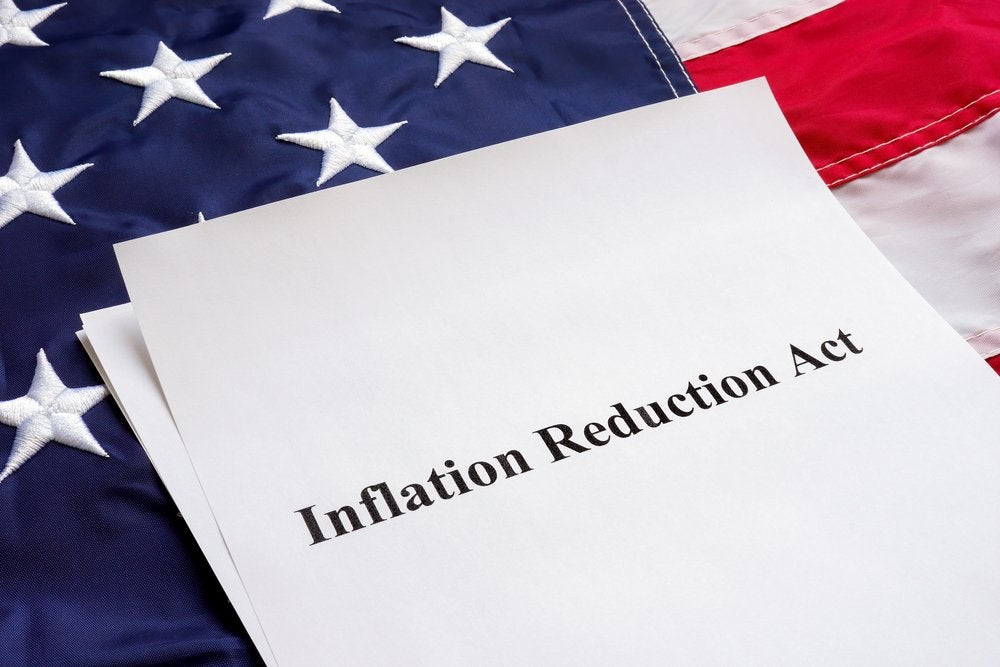Tax Credits are the Incentives in the Inflation Reduction Act The Inflation Reduction Act (IRA) was signed into law by President Joe Biden on August 16, 2022. The intent of which is to lower inflation by
By Jea Yu
This story originally appeared on MarketBeat

The Inflation Reduction Act (IRA) was signed into law by President Joe Biden on August 16, 2022. The intent of which is to lower inflation by lowering the costs for health, raise funding for the IRS, and funding decarbonization efforts through energy and climate projects reducing carbon emissions by (-40%) by 2030. The climate portion of the bill provides for $369 billion in funds to reduce climate change and "kickstart an era of affordable clean energy in America", according to President Biden. However, it won't all come from direct payments but also in the form of tax credits. Tax credits seem to be the real incentives in the IRA.
IRA Summary
The IRA expects to reduce the U.S. deficit by over $300 billion. It expects to raise $737 billion broken down into: $222 billion from 15% corporate minimum tax, $265 billion in prescription drug pricing reform, $124 billion in IRS tax enforcement, $74 billion in 1% stock buyback fees, and $52 billion in loss limitation extension. The law seeks $437 billion in total investments comprised of $369 billion towards energy security and climate change, $64 billion for the Affordable Care Act extension, and $4 billion for western drought resiliency. It expects to cut energy bills by $500 to $1,000 per year. It expects to create millions of domestic clean manufacturing jobs from investing more than $60 billion. The goal is to cut U.S. emissions by 40% by 2030 equal to one billion metric tons. It seeks to add 950 million solar panels, 120,000 wind turbines, and 2,300 grid scaled battery plants and advance cost-saving clean energy projects to 42 million people. By reducing fossil fuel pollution, it expects to prevent 3,000 premature deaths and up to 100,000 asthma attacks.
Consumer Energy Tax Credits
The IRA includes $9 billion consumer home energy rebates. Homeowners can claim tax credits for the installation of energy efficient windows, doors, water heaters, air conditioner, and furnaces to solar energy panels and systems. It provides a $4,000 consumer tax credit for the purchase used electric vehicles (EVs) and a $7,500 tax credit to buy new EVs However, it's also requires the manufacturing to be done in the U.S. and EV battery components must be sourced through the U.S. or an authorized trading partner. It also applies to middle and lower income households. Tax breaks are extended for the installation of EV recharging equipment. While the original Nonbusiness Energy Property Credit expired at the end of 2021, the IRA launches the Energy Efficient Home Improvement Credit in 2023. It also simplifies the credit to equal 30% of the costs for all eligible home improvements made during the year. It will also be expanded to certain appliances and equipment. However, roofing and air circulation fans are no longer covered. The original limited $500 tax credit lifetime limit will be replaced with a $1,200 annual limit on the credit amount.
Corporate Energy Tax Credits
The IRA invests $30 billion in product tax credits to accelerate the production of clean energy products like solar panels, batteries, wind turbines, and minerals processing. It has $10 billion in tax credits aimed at constructing clean technology manufacturing facilities to build clean energy products. It allocates $20 billion for rural communities for forest conservation, fire-resistance forests, urban tree planning, and climate friendly agricultural practices. It aims to protect nearly 2 million acres of national forests.
2025 Investment Tax Credits
The IRA will launch technology-neutral investment tax credits (ITCs), which expands the scope of investing in renewable energy technologies. Qualifying for ITCs currently requires the investment be linked directly to a project deploying solar, wind, or a small list of approved renewable energy technologies. This requires the proof and demonstration of the integration of approved renewable energy source to be used for the project, which can be complicated. The new ITC will not require specific technologies but only that the project generates zero emissions. This can open up a wide spectrum of zero-emission investments beyond the common solar, wind, and water to include battery technology, hydrogen, carbon sequestration, and new technologies that have yet to be discovered. It does not allow ITCs to power transmission investments, which encourages ways to optimize transmission technology more efficiently. However, with all the energy anticipated to be generated, a new transmission infrastructure would be required to distribute the power rather than have it stuck in the places of generation.









